MacDonald Laurier Institute
Liberalism’s civil war in the reaction to Hamas’ attack
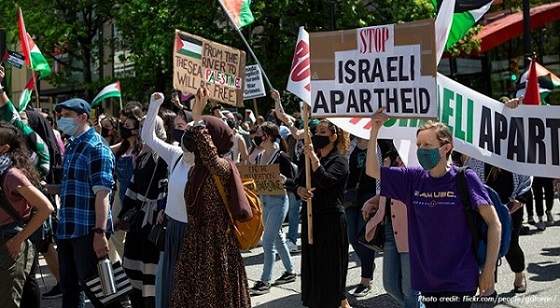
From the MacDonald Laurier Institute
By Michael Bonner
Where is the “fine line” between free speech and offence or hatred and what does it mean not to feel safe sharing an opinion?
Are we living through an illiberal or anti-liberal moment? Observers on both poles of the political spectrum say that we are. They cite things like pulling down statues, cancel culture, contests about pronouns, online or in-person mobs, campus social justice crusades, and so on. Leftists are “woke authoritarians”, and the Right are all inspired by Hitler. Both sides assert their positions are nothing more than a defence of fundamental freedoms and accuses the other of trying to crush it. Words like “fascist”, “communist”, and “Nazi” are thrown about without clarity or precision, and each side accuses the other of undermining liberal democracy.
Now, each side in this contest is right that liberalism is under strain, but not in the way they think. Or at least, not always. Most of the strife that we have been witnessing for the past decade is not a barbarian horde hammering away at the outer defences of the liberal empire, but a civil war unfolding within it. Those on the Left who demand “safe spaces”, trigger warnings, deplatforming speakers, or cancelling of opponents with views deemed offensive often do so in the name of protecting of individual freedom or autonomy, as they understand them. And their antagonists do not oppose those things because they reject individual freedom. Far from it. Their opposition amounts to asserting other liberal values, most especially free speech and academic freedom. The outcome is a conflict between antithetical visions of liberal freedoms.
Ideally, the liberal civil war could be ended easily. Everybody would accept some reasonable limit on his or her own personal freedoms, and respect those of everybody else. Those reasonable limits used to be determined by inherited custom and habit — what some people still vestigially refer to as “norms”. You should be able to say and do what you want, but there were things that you ought not to want to say or do. Consensus held that deliberate obscenity, blasphemy, insult, and so forth, should be avoided. Such things did not always need to be outlawed; but, if they were, it was simply because law aligned with custom.
Now, it is doubtful whether any such consensual norms still exist in the postmodern West where so much emphasis is placed on individual preferences to the detriment of a harmonious society. Or, if norms still obtain, their power to shape public morality and behaviour seems greatly diminished. In the absence of shared norms, the purpose of the law becomes simply to punish the infringement of a code of conduct which a society, or a part thereof, is incapable of understanding or doesn’t see any valuing in adhering to, and this is a serious problem.
We have a symbol of this problem in the reaction to Hamas’s attack on Israel on October 7 last year. Governments, police, and university authorities have struggled to differentiate between antithetical, but equally permissible, political views and expressions of hatred or efforts to intimidate others. Former president of Harvard, Claudine Gay, was asked at an American congressional hearing whether a hypothetical call for the genocide of Jews would be a violation of Harvard’s code of conduct. “It can be, depending on the context” was her answer, and this can be taken as the high-water mark of the confusion — especially in contrast with Harvard’s iron-fisted policy on “sizeism,” “fatphobia”, “cisheterosexism,” and Hallowe’en costumes. An ever-expanding list of new crimes that no one had heard of a few years ago must always be punished severely, but a demand for mass-murder may be allowed in certain contexts, apparently.
In Canada, we have seen many emotive reactions both to the attack of October 7 and Israel’s campaign against Hamas. The death of civilians has provoked disgust and condemnation, and there have been many public protests. But some of these seem to have less to do with sympathy for victims than hatred for the other side, and their form and venue are wholly inappropriate. Ostensibly pro-Gazan demonstrations have been directed at Jewish community centres, schools, and restaurants which have no connection with Israeli military policy. A protest on the overpass at Avenue Road and the 401 in Toronto was effectively a blockade of a predominately Jewish neighbourhood.
Meanwhile, the Canadian Senate recently released a report alleging a substantial rise in incidents of Islamophobia. A mosque in Toronto was vandalised, and faeces was smeared on an Islamic centre in Ottawa — two institutions that have no connection with Hamas.
Observers unsurprisingly demand moderation. Canada’s Centre for Israel and Jewish Affairs has called for “reasonable limits” to public protest, so as to exclude deliberate intimidation. Israel’s ambassador to Canada has warned of a “fine line” between freedom of speech and what he calls “freedom of hate.” And Amira Elghawaby, Canada’s federal Anti-Islamophobia Envoy, seems to encourage a renewed commitment to free speech, which seems to have been stifled, since “Canada’s Muslim, Arab and Palestinian communities right now do not feel fully safe to share their views on what’s happening in Gaza”.
Unfortunately, such exhortations, well-meaning and reasonable though they may be, will probably not have any beneficial effect. No moderation or limitation will be possible unless people can agree on where that “fine line” is, what it means to be “fully safe”, what public protest ought to look like, and where it should take place. In the absence of public consensus on those matters, governments may be forced to legislate. Karamveer Lalh has argued that spontaneous protest could be restricted to areas around government buildings and possibly forbidden elsewhere without a permit. Such a policy would not be above criticism, but it would at least attempt a balance between civil liberties and the state’s duty to protect its citizens. But if this failed, as it very well could, more draconian measures would surely follow.
Increasingly rigorous guidance and crackdowns on the location of public protests, though, would not address the other questions. Where is the “fine line” between free speech and offence or hatred and what does it mean not to feel safe sharing an opinion? Society cannot define and punish mere offence by relying on the subjective experience of individuals, as there is no form of speech that will not potentially offend someone.
Hate speech is a different matter. But the bar for hate speech is already so high that it is not even clear where it is. Our present law is directed against very extreme expressions of vilification and detestation, not mere disliking or antipathy. Obviously, it would be bad to find oneself on the wrong side of this law, but that happens rarely. Nevertheless, the fear that political opinions could potentially be construed as support for mass-murder has been enough to get some people fired or censured. Amira Elghawaby’s implication that one should feel safe to utter an opinion seems reasonable in principle, but this cannot mean that there should no prospect of objection or reaction.
And so, we find ourselves back in the middle of the liberal civil war. Though it is tempting to assert that the main solution to the problem is a renewed commitment to liberal freedoms, this cannot be right. Everyone already seems to believe in one vision or another of those freedoms, even —perhaps especially — when they conflict. The law may succeed in punishing people, and it may even reimpose order for a time. But can it teach us to be civil and to disagree peacefully? We are going to find out soon.
Dr Michael Bonner is a political consultant and former Director of Policy within the Government of Ontario. He is also a historian of ancient Iran and is the author of the new book In Defense of Civilization: How Our Past Can Renew Our Present.
Automotive
The high price of green virtue
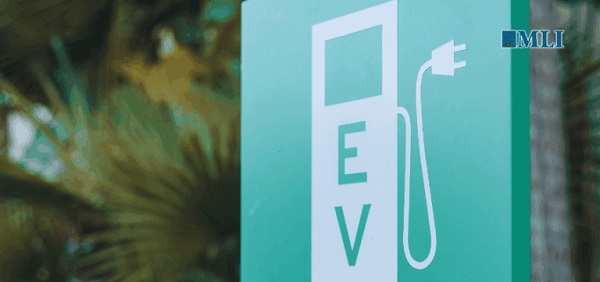
By Jerome Gessaroli for Inside Policy
Reducing transportation emissions is a worthy goal, but policy must be guided by evidence, not ideology.
In the next few years, the average new vehicle in British Columbia could reach $80,000, not because of inflation, but largely because of provincial and federal climate policy. By forcing zero-emission-vehicle (ZEV) targets faster than the market can afford, both governments risk turning climate ambition into an affordability crisis.
EVs are part of the solution, but mandates that outpace market acceptance risk creating real-world challenges, ranging from cold-weather travel to sparse rural charging to the cost and inconvenience for drivers without home charging. As Victoria and Ottawa review their ZEV policies, the goal is to match ambition with evidence.
Introduced in 2019, BC’s mandate was meant to accelerate electrification and cut emissions from light-duty vehicles. In 2023, however, it became far more stringent, setting the most aggressive ZEV targets in North America. What began as a plan to boost ZEV adoption has now become policy orthodoxy. By 2030, automakers must ensure that 90 per cent of new light-duty vehicles sold in BC are zero-emission, regardless of what consumers want or can afford. The evidence suggests this approach is out of step with market realities.
The province isn’t alone in pursuing EV mandates, but its pace is unmatched. British Columbia, Quebec, and the federal government are the only ones in Canada with such rules. BC’s targets rise much faster than California’s, the jurisdiction that usually sets the bar on green-vehicle policy, though all have the same goal of making every new vehicle zero-emission by 2035.
According to Canadian Black Book, 2025 model EVs are about $17,800 more expensive than gas-powered vehicles. However, ever since Ottawa and BC removed EV purchase incentives, sales have fallen and have not yet recovered. Actual demand in BC sits near 16 per cent of new vehicle sales, well below the 26 per cent mandate for 2026. To close that gap, automakers may have to pay steep penalties or cut back on gas-vehicle sales to meet government goals.
The mandate also allows domestic automakers to meet their targets by purchasing credits from companies, such as Tesla, which hold surplus credits, transferring millions of dollars out of the country simply to comply with provincial rules. But even that workaround is not sustainable. As both federal and provincial mandates tighten, credit supplies will shrink and costs will rise, leaving automakers more likely to limit gas-vehicle sales.
It may be climate policy in intent, but in reality, it acts like a luxury tax on mobility. Higher new-vehicle prices are pushing consumers toward used cars, inflating second-hand prices, and keeping older, higher-emitting vehicles on the road longer. Lower-income and rural households are hit hardest, a perverse outcome for a policy meant to reduce emissions.
Infrastructure is another obstacle. Charging-station expansion and grid upgrades remain far behind what is needed to support mass electrification. Estimates suggest powering BC’s future EV fleet alone could require the electricity output of almost two additional Site C dams by 2040. In rural and northern regions, where distances are long and winters are harsh, drivers are understandably reluctant to switch. Beyond infrastructure, changing market and policy conditions now pose additional risks to Canada’s EV goals.
Major automakers have delayed or cancelled new EV models and battery-plant investments. The United States has scaled back or reversed federal and state EV targets and reoriented subsidies toward domestic manufacturing. These shifts are likely to slow EV model availability and investment across North America, pushing both British Columbia and Ottawa to reconsider how realistic their own targets are in more challenging market conditions.
Meanwhile, many Canadians are feeling the strain of record living costs. Recent polling by Abacus Data and Ipsos shows that most Canadians view rising living costs as the country’s most pressing challenge, with many saying the situation is worsening. In that climate, pressing ahead with aggressive mandates despite affordability concerns appears driven more by green ideology than by evidence. Consumers are not rejecting EVs. They are rejecting unrealistic timelines and unaffordable expectations.
Reducing transportation emissions is a worthy goal, but policy must be guided by evidence, not ideology. When targets become detached from real-world conditions, ideology replaces judgment. Pushing too hard risks backlash that can undo the very progress we are trying to achieve.
Neither British Columbia nor the federal government needs to abandon its clean-transportation objectives, but both need to adjust them. That means setting targets that match realistic adoption rates, as EVs become more affordable and capable, and allowing more flexible compliance based on emissions reductions rather than vehicle type. In simple terms, the goal should be cutting emissions, not forcing people to buy a specific type of car. These steps would align ambition with reality and ensure that environmental progress strengthens, rather than undermines, public trust.
With both Ottawa and Victoria reviewing their EV mandates, their next moves will show whether Canadian climate policy is driven by evidence or by ideology. Adjusting targets to reflect real-world affordability and adoption rates would signal pragmatism and strengthen public trust in the country’s clean-energy transition.
Jerome Gessaroli is a senior fellow at the Macdonald-Laurier Institute and leads the Sound Economic Policy Project at the BC Institute of British Columbia
armed forces
Underfunded and undermanned, Canada’s Reserves are facing a crisis
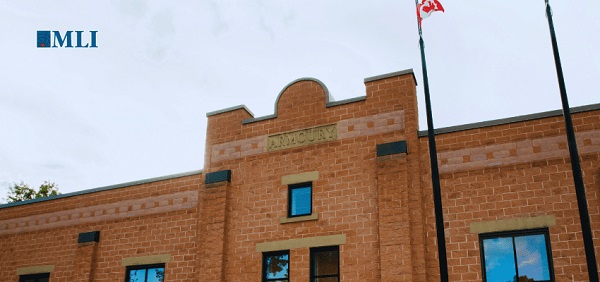
The Macdonald Laurier Institute
By J.L. Granatstein for Inside Policy
With the new threats facing Canada and NATO, change must come quickly: Canada needs to fix the Army Reserves.
Canada’s once-proud Reserves force is fading fast – and without urgent action, it risks becoming irrelevant.
The Canadian Armed Forces Primary Reserves have an authorized strength of 30,000, but the present numbers of the Army, Navy and Air Force Reserves as of November 2024 are only 22,024. The RCN Reserves number 3,045, the RCAF 2,162, and the Army 16,817. This is frankly pathetic, all the more so as the regular forces are sadly understrength as well.
The Army Reserves have a long history, with some units dating back before Confederation. Before both world wars the Militia’s strength was roughly 50,000, generated by populations of eight million in 1914 and eleven million in 1939. Amazingly, despite a lack of training and equipment, the Militia provided many of the Army’s officers, up to and including successful division and regimental commanders, and large numbers of the senior non-commissioned officers. A century ago, even after some consolidation following the Great War, almost every town and city had an armoury and a Militia unit with a cadre of officers, good numbers of enlisted men, and some social status in their community. The factory owners, bankers, and well-off were heavily represented, and the Militia had real clout with representation in Parliament and easy access to the defence minister.
Not any longer. The armouries in most of Canada have disappeared, sold off by governments and levelled by developers, and those that still stand are in serious need of maintenance. The local elites – except for honorary colonels who donate funds for extra kit, travel, celebratory volumes, and to try to stop Ottawa from killing their regiment – are noticeably absent.
So too are the working men and women and students. As a result, there are Army Reserve units commanded by a lieutenant-colonel with three majors, half a dozen captains, ten lieutenants, a regimental sergeant major and any number of warrant officers, and under seventy in the ranks. It is a rare Reserve regiment, even those in Canada’s largest cities, which has a strength above 200, and ordinarily when a unit trains on a weeknight or a weekend only half that number turn up. Even in summer, when reservists do their serious training at Petawawa or other large bases, there will be many absentees.
And when a unit is asked to raise soldiers for an overseas posting – say for the Canadian-led brigade in Latvia – it might be able to find ten or so volunteers, but it will be highly unlikely to be able to do so when the next call comes. Reservists have families, jobs or school classes, and few are able and willing to go overseas and even fewer to do so for subsequent deployments.
Without reservists filling the ranks (and even with them providing up to 20 per cent of a battalion’s strength), the undermanned regulars must cobble together a battalion of 600 or so by seconding troops from another Regular unit. After being brought up to Regular force standards before deployment, the reservists have performed well in operations, for example, in Afghanistan.
So why can’t the Army Reserves find the men and women to join their ranks? The reasons are many and much the same as the recruitment difficulties facing the Regular Army. Sexual harassment cases have abounded, affecting the highest ranks and the lowest. Modern equipment has been and is continuing to be lacking.
Procurement is still bogged down with process, paperwork, and long timelines – for instance, approving a new pistol took a decade. And the Reserves get modern equipment only after the Regulars’ needs are met, which unfortunately means never. Instead of a tank or a Light Armoured Vehicle, units get pickup vehicles painted in dark green and see anything more only on their rare days of training in the field.
Leaders of the Reserves have called for a separate budget for years, demanding that they decide how the funds are allocated. National Defence Headquarters has refused, rightly claiming that the underfunded Regulars have higher priority. But the Reserves point to official documents that in 2019-20 demonstrated that of $3.018 million allocated to the Reserves, only $1.3 billion reached them, the rest being unspent or re-allocated to the Regulars.
With some reason this infuriates Reservists who point to this happening every fiscal year.
So too does what they see as the condescension with which they are treated. A Reserve major is equal in rank to a Regular major, but both know that the Regular is almost always far better trained and experienced for his job and that rankles. (Many years ago, when I was a junior officer, I remember another Regular referring to “the ****ing Militia.” I know that Reserve officers reverse the compliment.)

Today with unemployment above nine per cent and with young Canadians’ unemployment rate even higher, the Reserves pay a new private a daily rate of some $125 (The Carney government recently promised a substantial pay raise). This ought to be a good option to earn some money. The Toronto Scottish, an old and established infantry unit, for example, has a website that lists other benefits: up to $8,000 for educational expenses and up to $16,000 for full-time summer employment. The Toronto Scottish has two armouries in the western suburbs, a female Commanding Officer, but under 200 soldiers. There should be a real opportunity in the current circumstances to increase those numbers by a good advertising campaign pitched directly at young men and women in the Toronto suburbs. The same can be said for every big city.
But the small town and rural units, tiny regiments whatever their storied histories, are unlikely to be able to grow very much. National Defence Headquarters needs to set a number – say 150, 200, or 250 – above which a unit will keep its command structure. Below that standard, however, units will be stripped of their higher ranks and effectively consolidated under the Reserve brigade in their area.
Reservists have fought such suggestions for years, but if the Reserves are to become an efficient and effective force, this is a change that must come. One such experiment has combined the Princess of Wales Own Regiment in Kingston, Ontario, and the Brockville Rifles by putting the Commanding Officer of the first and the Regimental Sergeant Major of the second in charge. Unit badges can remain, but this reduces the inflated command staffs.
In reality, these small regiments are nothing more than company-sized sub-units, and sub-units of less than a hundred simply cannot train effectively or draw enough new members from their small town and rural catchment areas. Combined they can function effectively.
The federal government will soon release an army modernization plan. Change is always difficult but with the new threats facing Canada and NATO, change must come quickly. Canada needs to fix the Army Reserves.
Historian J.L. Granatstein is a member of the Macdonald-Laurier Institute’s Research Advisory Board. A bestselling author, Granatstein was the director and CEO of the Canadian War Museum. In 1995, he served on the Special Commission on the Restructuring of the Reserves.
-

 Health2 days ago
Health2 days agoCDC’s Autism Reversal: Inside the Collapse of a 25‑Year Public Health Narrative
-

 Crime2 days ago
Crime2 days agoCocaine, Manhunts, and Murder: Canadian Cartel Kingpin Prosecuted In US
-

 Health2 days ago
Health2 days agoBREAKING: CDC quietly rewrites its vaccine–autism guidance
-

 National2 days ago
National2 days agoPsyop-Style Campaign That Delivered Mark Carney’s Win May Extend Into Floor-Crossing Gambits and Shape China–Canada–US–Mexico Relations
-
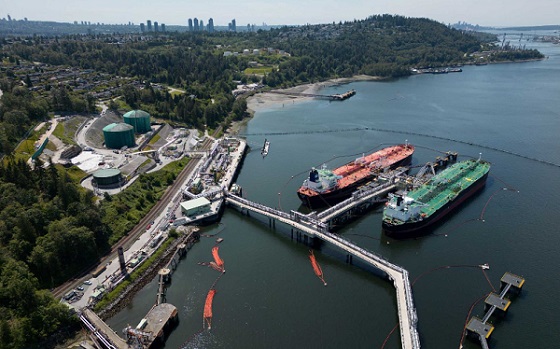
 Energy2 days ago
Energy2 days agoHere’s what they don’t tell you about BC’s tanker ban
-
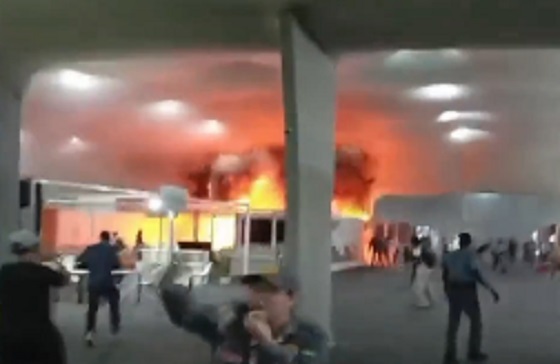
 Daily Caller2 days ago
Daily Caller2 days agoBREAKING: Globalist Climate Conference Bursts Into Flames
-
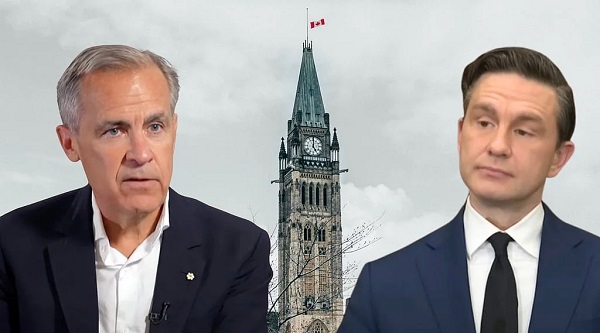
 Bruce Dowbiggin2 days ago
Bruce Dowbiggin2 days agoBurying Poilievre Is Job One In Carney’s Ottawa
-

 Great Reset1 day ago
Great Reset1 day agoEXCLUSIVE: A Provincial RCMP Veterans’ Association IS TARGETING VETERANS with Euthanasia









